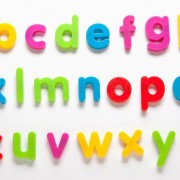Please, Draw the Word ‘House’
There is a great chance you already asked your students to draw or maybe designed a lesson which students were required to show off their artistic skills regardless their age. The value of such activity when teaching infants is commonly known, they love drawing and it is a tool to check whether the students are in accordance with what has been taught. As for adult learners, they are more hesitant in performing this kind of task, but the reason for applying it is similar. To check their understanding. However, there are linguistic reasons for having students draw and they are related to their acquisition of a foreign language.
When developing their mother tongue, infants tend to make mistakes regarding pronunciation, syntax and also semantics/pragmatics. Children can understand linguistic intent and reproduce an utterance after frequent exposure (Tomasello, 2003), but before she performs accurately, the infant will use an idiom (for instance) in contexts that adults may not understand. Before a child uses an idiom properly, she will firstly generalize it and think that the idiom can be generally used in any situation – just like children do when they first learn a verb and then every word is turned into one in their speech. This early linguistic behavior displays lack of understanding the meaning of the idiom and what it performs when used, therefore the context is also inappropriate. “When people repeatedly use the same particular and concrete linguistic symbols to make utterances to one another in “similar” situations, what may emerge over time is a pattern of language use” (Tomasello, 2003: 99), i.e. when infants are exposed to adult speech, linguistic patterns are created in their minds, meanings are generated and until they are able to define an accurate meaning there are attempts that society will be responsible to shape and polish the utterances. This can be seen in excerpts below.
*Excerpt 1 “Two and a Half Men” – season 8, episode 8
Jake – I’ll tell you what’s a great movie. Jackass 2. I know watcha thinking, sequel suck, but not that one. There’s this part…. [he describes the passage]
Megan – It sounds puerile.
Jake – Oh yeah, it’s totally puerile. Unless… puerile isn’t good. In which case it’s totally “unpuerile”.
*Excerpt 2 “Two and a Half Men” – season 8, episode 8
Evelyn – As a matter of fact I had a date.
Alan – What happened?
Evelyn – He cancelled.
Jake – Wow. Got dumped on your birthday? That’s so puerile… Or is it?
Speech is not a mere tool used to express feelings, make requests, etc. Whenever a person speaks, there is creation of meaning in the mind of the interlocutor (Gee, 2013). That is the very first experience a child has while paying attention to adults’ utterances, they take the representation described by the utterance and its linguistic features like sound patterns and reproduce the instance as soon as they find an opportunity to do so. For concrete instances that may not cause any problem, even though the mind representation (meaning) of for example, the word ‘house’, may be connected to one’s experience of ‘house’, i.e. the mental image and feeling that the word triggers is built on the experiences the interlocutor (a child, for instance) has had related to houses (Gee, 2013). This means that linguistic meanings are formed based on one’s personal take on what was orally said and that is the reason two drawings of a word by two different people will unlikely be the same. Children, while building their language, use their perception to “look for evidence in language use – distributional patterns, reduced pronunciation, performance in experiments introducing nonce linguistic forms” (Tomasello, 2003: 108).
“These experiences (perceptions, feelings, actions, and interactions) are stored in the mind or brain, not in terms of propositions or language but in something like dynamic images tied to perception both of the world and of our own bodies, internal states, and feelings” (Gee, 2013: 137) – whether a child or an adult. As a result, when the idiom ‘when in Rome, do as the Romans do’ is performed the interlocutor will pay attention to every aspect related to that production in order to learn that expression. By the time one is exposed to it again or wishes to use the idiom, that moment either comes back to mind or a new and personal reconstruction of that image surfaces making understanding or use of the expression possible. Therefore, meaning is in fact a personal representation of a situation in which one was exposed to a specific linguistic production (Gee, 2013) and this is a mind strategy that are found in people (both infants and adults).
While taking an English course, teachers are responsible for making sure students access their “database” that was developed through consolidation of L1 and and connect it to the new content. Students then will either link a new situated meaning to another already present in their mind representation or directly use a representation that was used for L1 now for L2. The former is more likely to happen since learners are having a novice experience and thus they will create a brand new meaning according to the situation they are in and connect it to that built upon their native language. In case of a concrete construction with words such as ‘house’, students may directly link it to what they understand as a house. Therefore, having drawing activities with learners is really interesting while teaching a second language for they will show the mind representation of both concrete and abstract language with a variant task of role plays, (video) games, writing tasks that require learners produce the new content so that teachers can have a input of their understanding.
If learners don’t have opportunities for producing in the newly learnt language, teachers will not have evidence of their situated meaning, whether they reconstructed a meaning accordingly or not, generalized a feature correct or incorrectly and, more importantly if now they are able to access their mind representation in order to communicate.











Deixe uma resposta
Want to join the discussion?Feel free to contribute!